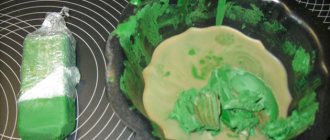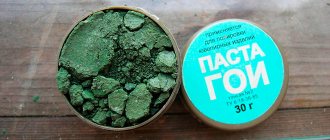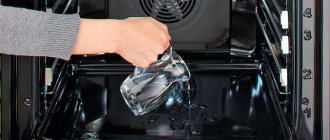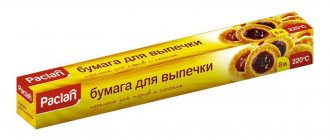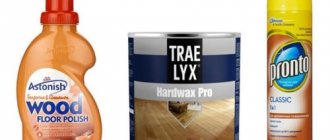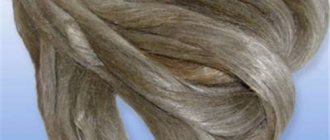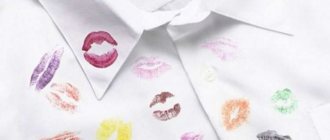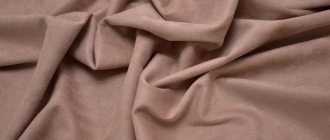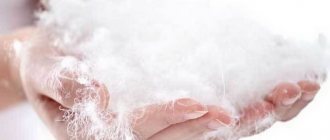GOI paste is one of the most popular means for polishing products made of various materials in our country. It is produced in the form of a green bar, similar to a soap bar, or in jars. It is worth noting that initially GOI paste was developed directly for grinding metal surfaces. But over time, its use spread to other areas of human activity. The product received its name in honor of the State Optical Institute, the enterprise where it was first obtained.
Classification and composition
The main compound in the GOI paste formula is chromium oxide. Its concentration affects the granularity of the substance and, accordingly, the performance characteristics. The higher the percentage of chromium oxide in the GOI paste, the rougher it is (varies from 60% to 85%). Depending on the grain size, there are several varieties, each of which is assigned an individual number:
- No. 1 - fine for final polishing and giving a mirror shine;
- No. 2 - thin to achieve a uniform matte surface;
- No. 3 - medium for removing small irregularities;
- No. 4 - rough to remove visible scratches.
Types of paste differ in composition, structure and color (from light green for fine to black and dark green for coarse).
In addition to chromium oxide, GOI paste contains fatty binding compounds, as well as activating components in the form of various solvents, adsorbents and other reagents, for example, silica gel, kerosene, stearin, bicarbonate of soda.
What materials can be polished with GOI paste?
The main purpose of GOI paste is the processing of metal products (stainless steel, cast iron, silver, aluminum, etc.), but it can also be used for polishing other surfaces: glass, plastics, ceramics, hard polymers. It is worth noting that this product has found wide application both in industry and in everyday life.
In everyday life, GOI paste is used for polishing kitchen knives, scissors or other products made of steel alloys. It is very popular among numismatists, who use it to remove corrosion from ancient coins and restore their shine. Fishermen use GOI paste to clean artificial fishing baits, increasing their specularity. Hunters use a mixture of this product to polish gun barrels.
5 ways to tidy up your sofa yourself
GOI paste is also used for polishing mirror, plastic and glass surfaces (including plexiglass). This technical tool can partially restore CDs, mobile phone screens, watches, jewelry, etc. GOI paste perfectly removes scratches and chips on car headlights, and also effectively removes their cloudiness and blackening.
Thus, GOI paste is the most important tool in metalworking, as well as in fine, high-quality polishing of various surfaces without the use of special equipment.
Working with cars
GOI paste is used for grinding and polishing body parts, headlights, mirrors and car windows. The body is processed with a power tool with felt attachments, the windows and headlights are polished with flannel. The type of paste used depends on the planned work:
- The medium composition (No. 3) is used to polish body parts. After sanding, the surface appears matte and requires finishing.
- Fine compounds (No. 2 and 1) are used to polish body parts and glass elements.
To determine which operation to start body work with, you need to run your fingernail over the problem area. If the nail clings to scratches, then the body is first sanded and then polished. If the nail does not cling to the scratches, polish it immediately.
Before work, body parts are moistened with glass cleaner or water. The speed of the polishing wheel is from 1100 rpm. A circle is driven around the body without stopping, maintaining an angle of 4-6 degrees between the nozzle and the part. The remaining paste is removed with warm water under low pressure.
Before polishing mirrors, glass and headlights, surrounding parts are covered with plastic film. The elements to be treated are pre-washed with either a soap solution, a glass cleaner solution, or a solution of technical alcohol. After washing, wipe dry.
When working, use a machine with a grinding wheel or a drill with a special attachment. The paste is ground into powder and mixed with machine oil. One drop of oil is needed per spoon of powder. The mixture is applied to a grinding wheel and rubbed over the surface with overlapping stripes. During polishing, make sure that the product does not overheat. Remaining paste is removed with a paper towel. Deep scratches are not suitable for polishing; they are filled with a colorless leveling compound.
How to use?
Apply GOI paste to the surface using a special polishing wheel or a soft cloth moistened with a solvent, for example, a rag or gauze. It should be remembered that the wetter the rag material, the longer the processing, but the better the result of the work done. It is possible to use kerosene, diesel fuel or other hard-to-evaporate, non-aggressive liquid as a solvent.
Polishing a product with GOI paste includes the following steps:
- Apply GOI paste to the rag material. It is strictly forbidden to add the product to the polished surface, as this may lead to the formation of new damage.
- Before grinding, to crush large particles, it is recommended to rub the product on a metal surface.
- To speed up the process, lightly treat the polished surface with liquid industrial oil.
- To avoid new scratches, polish with GOI paste without sudden movements or strong pressure. During the procedure, it is sometimes necessary to wipe the surface of the workpiece dry to control the quality of grinding.
- Upon completion of work, thoroughly rinse the product in solvent; if this is not possible, remove all signs of GOI paste from the surface with water.
Alternative remedies
The main competitors are diamond pastes and aluminum oxide pastes. They also vary in color according to their abrasive properties:
- Gray and red materials are used for grinding and rough polishing of metals. Some samples are capable of removing even deep risks.
- Pink ones are analogues of GOI paste No. 3. They remove traces of mechanical processing and create a shiny surface.
- White and turquoise compositions are intended for finishing and working with delicate surfaces.
Polishes are produced both in Russia and abroad: Gtool, Dialux, Rupes, Depural, Peek, Actuel. Foreign analogues are usually more expensive, but more effective and easier to use. They have lower consumption. Available in the form of bars, liquid mass or powder.
Features of polishing products made from various materials
It is important to note that products made from various materials require a certain polishing technology with GOI paste. First of all, it is necessary to select the type of technical means and fabric with which the surface will be treated. After this, in order to get the maximum result and prevent the formation of new damage, you should decide on the polishing process,
- For polishing glass and plastic, it is recommended to choose GOI No2 paste and a soft-pile cloth, such as cotton or flannel. In this case, the product must be generously rubbed onto a piece of rag material, and the surface of the product must be cleaned of debris and dust. After the preparatory work, you can begin polishing the surface. To do this, it is necessary to grind the product for several minutes without brute force, applying light pressure. It is worth noting that when processing the screen of a mobile phone or watch, you must carefully use solvents and oil so that they do not penetrate inside the case.
- Silver jewelry tends to lose its original shine over time. Correct use of GOI paste No. 3 will help restore the appearance of products. As a processing fabric, you should choose a material with a more rigid structure, for example, a tarpaulin or felt circle, or a piece of felt boots. After applying GOI paste to the fabric, you must thoroughly rub the product against it, completely covering the darkened surface. The final step is to polish the jewelry with a softer cloth until the final shine is obtained. To achieve the greatest effect, before starting polishing, it is recommended to boil silver products in a solution mixed from: 300 ml of water; 2 teaspoons of an aqueous solution of ammonium hydroxide; 50 g grated soap; 50 g washing powder.
- To polish knives or scissors, GOI paste is applied to a wooden block. You can also glue sandpaper to the board and rub it with this technical product, slightly moistened with a solvent. Then the steel alloy products should be ground against a block using a reciprocating motion at different angles.
5 tips on how to properly clean fur products
Precautionary measures
At the beginning, we mentioned that GOI paste is not currently produced in Russia due to its toxicity. However, it is sold freely in stores whose owners were able to supply the well-known polish. And if a person purchases this remedy, he should know some precautions in order to avoid tragedy.
- You need to use GOI paste extremely carefully, avoiding contact of its particles with the mucous membranes of the eyes and nose. If you are unable to protect yourself from this, immediately rinse the affected surface with running water and call an ambulance.
- Use a respirator or at least a medical mask when working with polish, especially when polishing metals using a cloth soaked in gasoline. You should not expose your body to the risk of poisoning from vapors of chemically complex substances.
- Keep children away from polish storage areas.
- Work with the product while wearing gloves to protect the skin of your hands.
So, GOI paste is an effective, but unsafe remedy. Even if you have used it for polishing many times, you should always be on guard when working. If the situation allows, it is better to use more gentle methods.
What products cannot be polished with GOI paste?
It is worth remembering that polishing products made from some materials with GOI paste may be ineffective or even cause damage to the appearance. It is not recommended to process with this technical means:
- gold-plated products (the outer layer can be erased);
- steel, except for knives and scissors, and nickel (as a rule, they are not polished by hand, but with a special tool);
- metal watches (can be polished with the mechanism removed);
- sapphire watch crystals (grinding with GOI paste is ineffective).
Analogs
If the specified composition cannot be dissolved, or the resulting effect does not correspond to the desired one, you can replace this technical product with a complete analogue. For household needs, many craftsmen choose products from foreign manufacturers, which are distinguished not only by high technical characteristics, but also by a long shelf life, affordable storage conditions, and prices. Here are popular offers from foreign manufacturers:
- Rupes;
- Dialux;
- Depural Neo.
Harmful to humans?
Concerns are often raised that the chromium oxide contained in GOI paste is toxic. These judgments are justified, since a given compound, depending on its valency, can exhibit different properties. Hexavalent chromium oxide is toxic and hazardous to human health. Meanwhile, in the production of GOI paste, a non-toxic trivalent compound that has passed examination is used.
At the same time, excluding the harmfulness of GOI paste to human health, it is recommended to use protective glasses and a mask when using it. This is due to the fact that when polishing products, dust is generated, which can cause irritation of the mucous membranes.
Preparation for polishing
The action of GOI paste consists of the work of small abrasive particles, which, through friction, erase irregularities from the surface. Before you start polishing, you need to prepare a small piece of soft cloth and soak it in gasoline (it is not necessary to use car fuel; gasoline for lighters will be enough). A small amount of paste is applied to the material. Using the prepared tool, you should first wipe the unnecessary metal surface to remove excessively large abrasive particles, otherwise the desired surface will not be polished, but damaged. You don't want to see a scratch on the surface after polishing, right?
